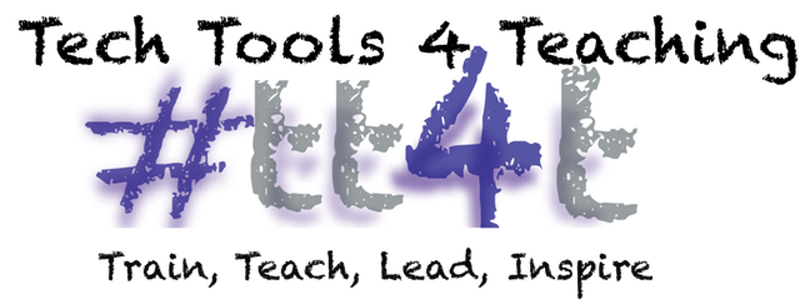As a district instructional technology trainer/coach in Bellevue Public Schools, I conduct a lot of professional development sessions. Our two district initiative are Google and Apple, so most of the training I do are related to these two topics. Most recently, I have been conducting Apple Foundations Training with my colleague Jenny Krzystowczyk (@jennykbps) and the last session we conducted were on iPads in the classroom.
It is amazing to see the tremendous growth each teacher experiences and how that growth occurs for each person in different ways. As we embark on a learning adventure, our own growth is not only a result of what we personally do, but also what we learn and share with one another. To me, that is the essence of learning. Each of us is unique and each of our learning experiences needs to be unique too.
Although training is over, it is really just the beginning of a new adventure of connectedness, inspiration, learning, and growth. Here are some ways to continue professional growth by being connected with others, taking a deeper dive into learning practices, and putting ideas into action in the classroom.
Stay Connected
Many people ask our team where we get great ideas and how we keep learning. Twitter and Google Communities is the answer. Twitter and Google Communities connects me to brilliant minds every day and I am constantly being pushed to be better, try new things, be inspired, and share! Tapping into social networks is the best thing I ever did and the best FREE professional development I regularly receive! Create a thread of connectivity for attendees by utilizing the collaborative tools of Google+ Communities and Twitter. Both are powerful connectors, so take advantage of them and create a Google Community and Twitter hashtag! Encourage everyone to check in to the community, share ideas, comment, and even join a Twitter chat.
Connect to the World
Public Google Communities are a great way to connect your classroom to other classrooms. From online field trips via a Google Hangout to finding classrooms to connect with. Two great communities to join are http://eduhangout.org started by Brent Catlett (@catlett1) and Connected Classrooms at http://connectedclassrooms.withgoogle.com/ that Google recently launched. Connecting your students to each other and the world is also possible with a simple tool - blogging. You can use http://www.kidblog.org (@kidblogdotorg) to get your classes blogging and #comments4kids on Twitter to share the blogs with the world and have other students and teachers comment on their writing.
Take a Deeper Dive
Tap into the training materials even after the sessions are over! Take advantage of online resources that were provided during the training. Whether it is from an iTunes U Course, a shared Google folder, or a website hosting all the materials, the materials are there for you. Reviewing the materials you were given can be a great way to dig deeper into new content, construct meaning, and implement new ideas into your classroom setting.
Take Action
One of my favorite sayings is: “If it is to be, it is up to me.” Take what you are given, and make a difference. For example, if you completed our training and have 1 iPad, teach with your iPad in hand and create rich learning experiences with that iPad. We have a strand in our Google Community to share ideas in the 1 iPad classroom. What you share may inspire others! Continue to push yourself to be better and continue to learn and grow.
As Adam Bellow (@adambellow) said at ISTE 13, “Do not let fear and/or fear of failure hold you back.” Connect, inspire others, take a deeper dive into the content, and start a ripple. Seize the opportunity as a learner and make a difference. The main agent of change isn’t professional development or devices, it is YOU! You are the agent of change!
Written by Ann Feldmann
@annfeldmann1




